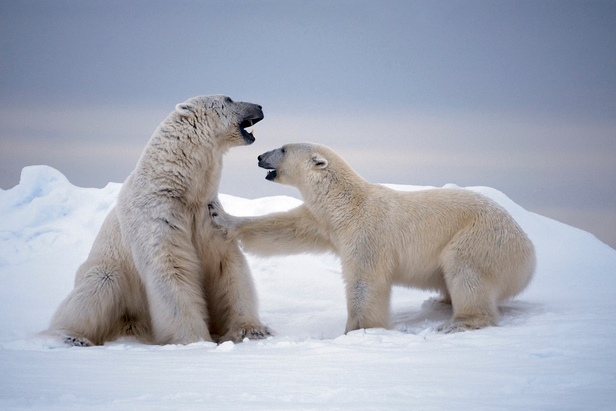
Polar bears and brown bears diverged much longer ago than previously thought, new research suggests.
Past estimates for this divergence came from brown bears living on the Admiralty, Baranof and Chichagof (ABC) Islands in Alaska.
But according to a new study, ABC Island bears are actually the result of mating between brown bears and polar bears in the last several thousand years, making the population useless for determining polar bear roots.
"If we really want to understand the evolution of brown bears and polar bears , we should ignore them [the ABC bears]," said study co-author Beth Shapiro, an evolutionary biologist at the University of California Santa Cruz. "They are a special case and they're not going to tell us anything about the origin of the polar bear."
The findings were published today (March 14), in the journal PLOS Genetics.
ABC bears
Just when polar bears and brown bears diverged has been an ongoing debate.
Get the world’s most fascinating discoveries delivered straight to your inbox.
Past research revealed that brown bears on the ABC Islands, off the southeastern coast of Alaska, had mitochondrial DNA that looked just like polar bear DNA. (Mitochondrial DNA comes only from the mother and is carried in the cytoplasm in the cell's energy-making structures called mitochondria.)
That seemed to suggest polar bears diverged from brown bears around 150,000 years ago, Shapiro told LiveScience.
But that didn't make sense: The two majestic species have different behaviors and physical appearances, and other gene studies suggested they split off from one another 4 million years ago. The strange finding led researchers to propose outlandish theories to explain the mystery, Shapiro said, including intermixing at least two separate times in their past.
Migrant dads
To sort out the confusion, Shapiro and her colleagues analyzed the DNA of seven polar bears, two brown bears (one from ABC Islands) and one black bear.
The team found that the ABC Islands' bear shared more than 6 percent of the DNA in its X sex chromosome, but just 1 percent of its overall DNA, with polar bears.
Because X-chromosome genes come from the mother most of the time, the findings suggest the polar bear DNA originally came from female bears. [In Photos: 8 Bizarre Hybrid Animals]
To explain the findings, the researchers proposed a strange scenario: The brown bears of ABC Islands were once polar bears. But as the glaciers melted thousands of years ago, those polar bears became trapped on their islands.
Further warming led to better conditions for brown bears to colonize the Alaskan mainland. Because males are the ones that disperse, they swam across the channel to the ABC Islands over a long period of time, mating with the local females (polar bears). As a result, the ABC bears eventually came to look and act like brown bears, while still maintaining traces of their polar bear past in their mitochondrial DNA.
The genetic analysis revealed a wide estimate for when brown bears and polar bears first diverged, ranging from hundreds of thousands to millions of years ago.
The findings suggest people should ignore ABC bears when trying to sort out polar bears' history, Shapiro said.
Unfortunately, scientists aren't any closer to solving the mystery of polar bear origins.
"Polar bears live in a place that it is very unlikely that they're going to leave fossils," Shapiro said, referring to the fact that fossils don't survive in the icy, watery conditions of the Arctic. That makes it difficult to trace their evolution from a common ancestor with brown bears, she said.
Follow Tia Ghose on Twitter @tiaghose. Follow LiveScience @livescience, Facebook & Google+. Original article on Live Science.

Tia is the editor-in-chief (premium) and was formerly managing editor and senior writer for Live Science. Her work has appeared in Scientific American, Wired.com, Science News and other outlets. She holds a master's degree in bioengineering from the University of Washington, a graduate certificate in science writing from UC Santa Cruz and a bachelor's degree in mechanical engineering from the University of Texas at Austin. Tia was part of a team at the Milwaukee Journal Sentinel that published the Empty Cradles series on preterm births, which won multiple awards, including the 2012 Casey Medal for Meritorious Journalism.



